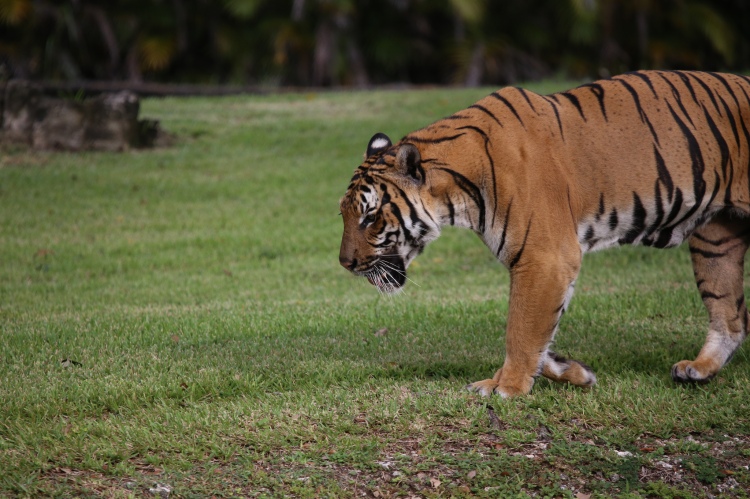
For the first time, a tiger (Panthera tigris) has been successfully translocated between two Indian states.
I was first alerted to this story from The Times of India by a tweet from Dr. Kalli Doubleday, a previous Q&A participant on The Jaguar and its Allies:
As Dr. Doubleday’s tweet states, this translocation was a milestone event. Under the supervision of trained wildlife veterinarians, a tiger was tranquilized and captured in Kanha National Park in the Indian state of Madhya Pradesh. The team then measured the cat and moved it to Satkosia Tiger Reserve in the state of Odisha.
According to the original article, this was the first of six tiger translocations planned between the states of Madhya Pradesh and Odisha. The ultimate goal is to re-establish a healthy tiger population in Satkosia.
However, not everyone was supportive of this move. Long-time tiger supporter Ajay Dubey had raised concerns about the safety of tigers in the state of Odisha, leading him to oppose the translocation.
There is always an element of risk involved when translocating big cats. But if the exchanges between Madhya Pradesh and Odisha go well, they could have far-reaching consequences. They might set the stage for further interstate tiger translocations, helping to repopulate other reserves that have lost many of their tigers.
Great! Thanks for sharing.
LikeLiked by 1 person
It is great! Thank you for reading!
LikeLike
You’re welcome Josh!
LikeLiked by 1 person
I am astonished that this is the first interstate translocation!
LikeLiked by 1 person
It seems surprising, but relocating big cats is very difficult. First of all, being handled by humans causes an immense amount of stress for the cats. Then there’s the matter of territoriality. Big cat’s don’t like strangers. So if you translocate a tiger to an area that already has many resident tigers, chances are they’ll fight and injure each other. For these reasons and more, translocating big cats requires an extensive amount of planning and highly-trained crews. I also have no idea what interstate politics are like in India.
LikeLiked by 2 people
It is nice to think that animals can be re-located to safer homes!
LikeLiked by 2 people
Well, I don’t know how much safer Satkosia is. Based on the limited information I know, it seems like the main purpose of this translocation was to try and repopulate an area that had lost most of its tigers. Let’s hope it works, and that this is the start of a wider repopulation program.
LikeLiked by 2 people
I would hate to think of a world without tigers, they are such majestic animals!
LikeLiked by 2 people
They are indeed. Miracles of evolution, one might call them.
LikeLiked by 1 person
When I first read the beginning I thought translocation would be quite risky because it can cause safety and health risks and cause stress on the big cats but I guess in terms of overall safety and protection of the species, it’s a good idea!
LikeLiked by 1 person
Well, translocation is very risky. The stress and health risks for the cat during the translocation process are a problem, and territorial animals like tigers need to be released in areas without resident tigers; otherwise, they’ll fight with the tigers that are already there.
However, there are a limited set of situations in which translocation is justified – if it’s done very carefully. That seems to have been the case here.
LikeLiked by 1 person
Yeah exactly! And if it was done carefully, then that’s okay.
LikeLiked by 1 person
Translocation is always a stressing factor to the animals.
I get the whole idea of trying to reintroduce a specie to a previous environment but I’m just wondering if this move was in the best interest for the tiger.
LikeLiked by 1 person
Only time will tell.
LikeLiked by 1 person
Indeed, I hope it works out
LikeLiked by 1 person
Brilliant reading Josh :)
LikeLiked by 1 person
Thanks Rory!
LikeLiked by 1 person
Hunters from all over the world came to India and hunted the tigers till it almost got extinct. Now there are 4000 left in India. In recent years hunting is banned and care is been taken to conserve them. But still there is a lot of demand for Tiger penis in china( for some kind of medical treatments). Even till today black market exists, which smuggle tiger body parts out of India.
LikeLiked by 1 person
Yea, the Traditional Chinese Medicine trade is a massive problem all around the world. Now that tigers are so scarce, other cat species (like jaguars and lions) are being targeted too.
LikeLike